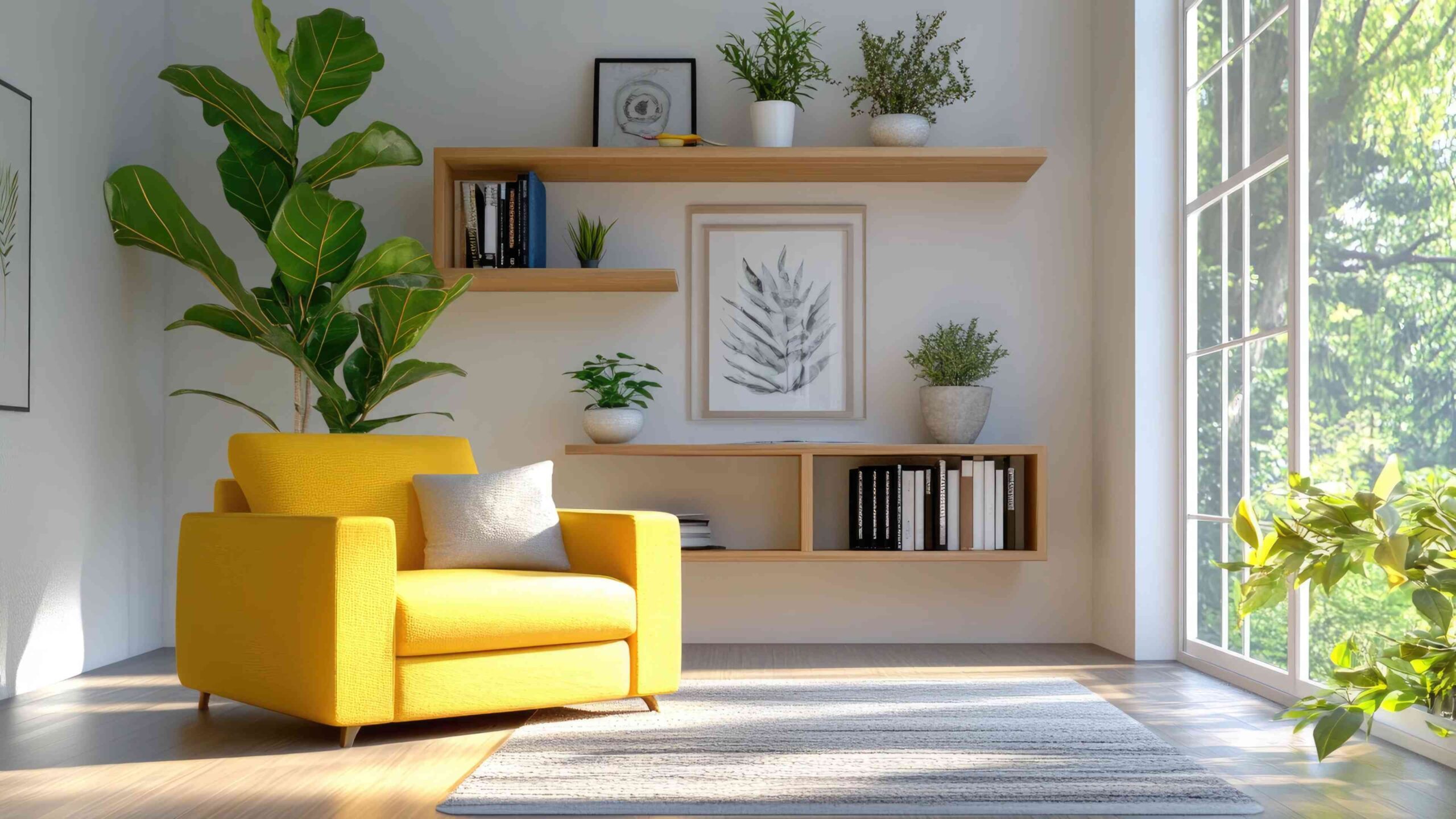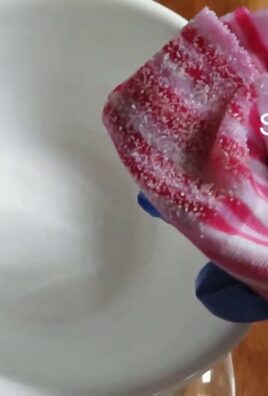Deep Cleaning Living Room Hacks: Let’s face it, our living rooms are the heart of our homes, but they can quickly become a magnet for dust bunnies, crumbs, and general clutter. I know mine does! Ever feel like you’re constantly battling a losing war against the mess? You’re not alone! But what if I told you that you could reclaim your living space and keep it sparkling with a few clever, easy-to-implement tricks?
For centuries, cultures around the world have valued clean and organized living spaces, believing they contribute to a sense of calm and well-being. Think of the ancient Japanese art of *Oosouji*, the year-end deep clean meant to purify the home and prepare for a fresh start. While we might not be sweeping out evil spirits, a good deep clean can definitely banish stress and create a more inviting atmosphere.
That’s where these deep cleaning living room hacks come in! I’m going to share some of my favorite DIY tips and tricks that will help you tackle even the most stubborn grime and keep your living room looking its best. From quick daily tidies to more intensive deep cleaning strategies, I’ve got you covered. These aren’t just about aesthetics; a clean living room is a healthier living room, reducing allergens and creating a more comfortable space for you and your family to relax and enjoy. So, grab your cleaning supplies, and let’s get started!

Deep Cleaning Your Living Room: A DIY Guide to Sparkling Cleanliness
Hey everyone! Ready to transform your living room from a lived-in space to a sparkling sanctuary? I know, deep cleaning can seem daunting, but trust me, breaking it down into manageable steps makes it totally achievable. Plus, the feeling of accomplishment afterwards? Priceless! Let’s dive into some DIY hacks that will leave your living room looking and feeling brand new.
Gather Your Supplies
Before we even think about touching a duster, let’s get organized. Having everything you need at your fingertips will save you time and frustration. Here’s my go-to list:
* Microfiber cloths: These are my absolute favorite for dusting and wiping surfaces. They’re super absorbent and won’t leave streaks.
* All-purpose cleaner: Choose one that’s safe for your surfaces. I personally love using a natural, eco-friendly option.
* Glass cleaner: For windows, mirrors, and glass tables.
* Upholstery cleaner: Essential for tackling stains on your sofa and chairs. Make sure to test it in an inconspicuous area first!
* Carpet cleaner: If you have carpets or rugs, a good carpet cleaner is a must. You can rent a machine or use a spray-on solution.
* Vacuum cleaner: A powerful vacuum with attachments is crucial for getting into all those nooks and crannies.
* Duster: A long-handled duster is perfect for reaching high places like ceiling fans and light fixtures.
* Bucket: For mixing cleaning solutions.
* Sponges: For scrubbing stubborn stains.
* Rubber gloves: To protect your hands from harsh chemicals.
* Trash bags: For decluttering as you go.
* Old toothbrush: Perfect for cleaning grout and tight spaces.
* Baking soda: A natural deodorizer and cleaning agent.
* White vinegar: Another natural cleaning powerhouse.
* Spray bottles: For diluting cleaning solutions.
Phase 1: Declutter and Prepare
Okay, let’s get started! The first step is to declutter and prepare the space for a deep clean. This will make the actual cleaning process much easier and more efficient.
1. Remove all items from surfaces: Take everything off coffee tables, shelves, and any other surfaces. This includes books, magazines, decorative items, and anything else that’s cluttering the space.
2. Sort and declutter: Go through the items you removed and decide what to keep, donate, or throw away. Be honest with yourself about what you really need and use.
3. Put away misplaced items: Return items that belong in other rooms to their proper places.
4. Open windows: Fresh air is your friend! Open windows to ventilate the room and help dissipate any cleaning fumes.
5. Remove curtains or drapes: Take down your curtains or drapes and prepare them for washing or dry cleaning. I usually wash mine according to the care label instructions. If they’re delicate, dry cleaning is the way to go.
6. Move furniture (if possible): If you can, move your furniture away from the walls to make it easier to clean behind and underneath. This is especially important for vacuuming.
Phase 2: Dusting and Vacuuming
Now that the room is decluttered and prepped, it’s time to tackle the dust and dirt. This is a crucial step in deep cleaning, as it removes loose debris and allergens.
1. Dust high surfaces: Start with the highest surfaces first, such as ceiling fans, light fixtures, and crown molding. Use a long-handled duster to reach these areas. Work your way down to lower surfaces.
2. Dust shelves and furniture: Use a microfiber cloth to dust shelves, tables, and other furniture. Pay attention to details like picture frames and decorative items.
3. Dust electronics: Unplug electronics before dusting them. Use a dry microfiber cloth to wipe down screens and keyboards. You can also use a can of compressed air to remove dust from hard-to-reach areas.
4. Vacuum the floors: Vacuum the entire floor, including under furniture and along baseboards. Use the attachments to get into corners and crevices. If you have carpets or rugs, vacuum them thoroughly to remove dirt and debris.
5. Vacuum upholstery: Use the upholstery attachment on your vacuum to clean your sofa, chairs, and other upholstered furniture. Pay attention to seams and crevices where dust and crumbs tend to accumulate.
Phase 3: Cleaning Surfaces
With the dusting and vacuuming done, it’s time to focus on cleaning the surfaces in your living room. This includes everything from windows and mirrors to tables and shelves.
1. Clean windows and mirrors: Spray glass cleaner onto windows and mirrors and wipe them clean with a microfiber cloth. Use a clean, dry cloth to buff away any streaks.
2. Wipe down tables and shelves: Use an all-purpose cleaner to wipe down tables, shelves, and other surfaces. Pay attention to areas that are frequently touched, such as doorknobs and light switches.
3. Clean baseboards: Wipe down baseboards with a damp cloth and all-purpose cleaner. You can use an old toothbrush to scrub away any stubborn dirt or grime.
4. Clean light switches and outlets: Before cleaning, make sure to turn off the power at the breaker. Use a damp cloth and all-purpose cleaner to wipe down light switches and outlets. Be careful not to get any water inside the electrical components.
5. Clean the fireplace (if applicable): If you have a fireplace, clean it out regularly. Remove ashes and debris from the firebox. Wipe down the mantel and surrounding area with a damp cloth.
Phase 4: Upholstery and Carpet Cleaning
This is where we tackle the big guns! Cleaning your upholstery and carpets can make a huge difference in the overall cleanliness of your living room.
1. Spot clean upholstery: Before cleaning your entire sofa or chair, test your upholstery cleaner in an inconspicuous area to make sure it doesn’t damage the fabric. If it’s safe to use, apply the cleaner to any stains or spots. Follow the instructions on the product label.
2. Deep clean upholstery: If your upholstery is heavily soiled, you may want to consider renting a professional upholstery cleaner. Alternatively, you can use a handheld upholstery cleaner or a steam cleaner. Follow the instructions on the machine and be sure to allow the upholstery to dry completely before using it.
3. Spot clean carpets and rugs: Just like with upholstery, test your carpet cleaner in an inconspicuous area before applying it to any stains or spots. Follow the instructions on the product label.
4. Deep clean carpets and rugs: If your carpets or rugs are heavily soiled, you may want to consider renting a professional carpet cleaner. Alternatively, you can use a spray-on carpet cleaner or a steam cleaner. Follow the instructions on the machine and be sure to allow the carpets and rugs to dry completely before walking on them.
5. Deodorize carpets and rugs: Sprinkle baking soda over your carpets and rugs and let it sit for at least 30 minutes. Then, vacuum it up. This will help to absorb odors and freshen up your carpets.
Phase 5: Finishing Touches
Almost there! These final touches will really make your living room shine.
1. Wash or dry clean curtains and drapes: Once your curtains and drapes are clean, hang them back up.
2. Arrange furniture: Put your furniture back in its original positions or try a new arrangement.
3. Replace decorative items: Put your decorative items back on shelves and tables.
4. Add fresh flowers or plants: A vase of fresh flowers or a potted plant can add a touch of life and freshness to your living room.
5. Light a candle or use an air freshener: A pleasant scent can help to create a relaxing and inviting atmosphere.
Bonus Tip: DIY Cleaning Solutions
Want to save money and use more natural cleaning products? Here are a few of my favorite DIY cleaning solutions:
* All-purpose cleaner: Mix equal parts white vinegar and water in a spray bottle. Add a few drops of your favorite essential oil for a pleasant scent.
* Glass cleaner: Mix 1/4 cup white vinegar with 2 cups water in a spray bottle.
* Upholstery cleaner: Mix 1/4 cup baking soda with 1/2 cup warm water. Apply the paste to stains and let it sit for 15 minutes. Then, blot with a clean, damp cloth.
* Carpet deodorizer: Sprinkle baking soda over your carpets and let it sit for at least 30 minutes. Then, vacuum it up.
And there you have it! A sparkling clean living room, all thanks to your hard work and these DIY hacks. Remember to maintain your clean living room by doing regular light cleaning tasks, like dusting and vacuuming,

Conclusion
So, there you have it! These deep cleaning living room hacks aren’t just about tidying up; they’re about reclaiming your space and creating a healthier, more enjoyable environment. We’ve covered everything from banishing dust bunnies hiding under the sofa to revitalizing your upholstery and making your windows sparkle. The beauty of these DIY solutions lies in their simplicity and affordability. You don’t need expensive equipment or harsh chemicals to achieve a truly deep clean.
Why is this a must-try? Because a clean living room is more than just aesthetically pleasing; it’s a sanctuary. It’s where you relax, entertain, and create memories. By implementing these hacks, you’re investing in your well-being and creating a space that truly supports your lifestyle. Plus, knowing you accomplished this deep clean yourself is incredibly satisfying!
But don’t stop there! Feel free to experiment and adapt these hacks to suit your specific needs and preferences. For instance, if you’re sensitive to certain scents, you can customize your cleaning solutions with essential oils like lavender or lemon. If you have pets, consider using a pet-specific upholstery cleaner or adding a few drops of tea tree oil to your vacuum cleaner bag to neutralize odors. You can also use a microfiber cloth dampened with a solution of water and white vinegar to clean your electronics screens, ensuring they are streak-free and dust-free.
Another variation to consider is using baking soda as a natural deodorizer for your carpets and rugs. Simply sprinkle a generous amount of baking soda over the surface, let it sit for at least 30 minutes (or even overnight for stubborn odors), and then vacuum it up thoroughly. This is a great way to freshen up your living room without using harsh chemicals.
Remember, the key to a successful deep clean is consistency. While these hacks are designed to tackle the big jobs, incorporating smaller cleaning tasks into your weekly routine will help maintain a clean and comfortable living room year-round. Wipe down surfaces regularly, vacuum frequently, and address spills immediately to prevent stains from setting in.
We truly believe that these deep cleaning living room hacks will transform your space and your life. So, what are you waiting for? Gather your supplies, roll up your sleeves, and get ready to experience the joy of a sparkling clean living room.
We’re confident that you’ll be amazed by the results. And most importantly, we want to hear about your experience! Share your before-and-after photos, your favorite tips and tricks, and any variations you’ve tried in the comments below. Let’s create a community of clean living enthusiasts and inspire each other to create healthier, happier homes. Don’t forget to tell us which of these deep cleaning living room hacks worked best for you! Your feedback is invaluable and will help others on their cleaning journey. Happy cleaning!
Frequently Asked Questions (FAQ)
Q: How often should I deep clean my living room?
A: The frequency of deep cleaning your living room depends on several factors, including the size of your household, the presence of pets, and your lifestyle. As a general guideline, a deep clean every 3-6 months is recommended. However, if you have children or pets, or if you frequently entertain guests, you may need to deep clean more often. Regular maintenance cleaning, such as vacuuming, dusting, and wiping down surfaces, should be done weekly to prevent dirt and grime from building up.
Q: What are the essential supplies I need for deep cleaning my living room?
A: The essential supplies for deep cleaning your living room include:
* Vacuum cleaner with attachments
* Microfiber cloths
* All-purpose cleaner
* Upholstery cleaner
* Glass cleaner
* Baking soda
* White vinegar
* Dish soap
* Sponges
* Bucket
* Rubber gloves
* Dust mask (optional)
* Lint roller
Depending on the specific areas you plan to clean, you may also need additional supplies such as a carpet cleaner, wood polish, or furniture polish.
Q: How do I clean upholstery without damaging it?
A: Cleaning upholstery requires caution to avoid damaging the fabric. Always start by checking the manufacturer’s instructions or the care label on the furniture. If the label indicates “W” (water-based cleaner), you can use a mild detergent solution. If it indicates “S” (solvent-based cleaner), you’ll need to use a dry cleaning solvent. If the label indicates “X,” professional cleaning is recommended.
Before applying any cleaner, test it on an inconspicuous area of the upholstery to ensure it doesn’t cause discoloration or damage. Use a clean microfiber cloth to gently blot the cleaner onto the stain, working from the outside in. Avoid rubbing, which can spread the stain. Once the stain is removed, blot the area with a clean, damp cloth to remove any residue. Allow the upholstery to air dry completely.
Q: How do I get rid of stubborn stains on my carpet?
A: Stubborn carpet stains can be challenging to remove, but with the right approach, you can often achieve good results. Start by blotting the stain with a clean cloth to absorb as much of the liquid as possible. Avoid rubbing, which can push the stain deeper into the fibers.
Next, apply a carpet stain remover according to the manufacturer’s instructions. You can also try a homemade solution of equal parts white vinegar and water. Apply the solution to the stain, let it sit for a few minutes, and then blot it with a clean cloth. Repeat as needed until the stain is removed.
For particularly stubborn stains, you may need to use a carpet cleaning machine or hire a professional carpet cleaner.
Q: How do I remove pet hair from my living room furniture and carpets?
A: Pet hair can be a major nuisance in the living room, but there are several effective ways to remove it. A lint roller is a quick and easy way to remove pet hair from furniture and clothing. You can also use a rubber glove or a damp sponge to wipe down surfaces and collect pet hair.
For carpets and rugs, a vacuum cleaner with a pet hair attachment is essential. These attachments are designed to lift pet hair from the fibers more effectively than a standard vacuum cleaner head. You can also try using a carpet rake or a squeegee to loosen pet hair before vacuuming.
Q: How can I prevent dust from accumulating in my living room?
A: Preventing dust from accumulating in your living room requires a multi-pronged approach. Start by regularly dusting surfaces with a microfiber cloth. Microfiber cloths are more effective at trapping dust than traditional cloths.
Vacuum your living room frequently, paying attention to areas where dust tends to accumulate, such as under furniture and along baseboards. Consider using an air purifier to remove dust and allergens from the air.
Keep windows and doors closed as much as possible to prevent dust from entering the room. When you do open windows, use screens to filter out dust and pollen. Regularly wash or replace your curtains and drapes to remove accumulated dust.
Q: What are some natural alternatives to chemical cleaning products?
A: There are many natural alternatives to chemical cleaning products that are just as effective and much safer for your health and the environment. White vinegar is a versatile cleaner that can be used to clean windows, floors, and countertops. Baking soda is a natural deodorizer and can be used to clean carpets, upholstery, and appliances. Lemon juice is a natural disinfectant and can be used to clean cutting boards and other surfaces. Essential oils, such as lavender, tea tree, and eucalyptus, have antibacterial and antifungal properties and can be added to cleaning solutions for a pleasant scent and added cleaning power.
Q: How do I clean my living room windows for a streak-free shine?
A: Achieving streak-free windows requires the right technique and cleaning solution. Start by dusting the windows with a dry microfiber cloth to remove any loose dirt or debris.
Next, prepare a cleaning solution of equal parts white vinegar and water. You can also add a few drops of dish soap to the solution for extra cleaning power.
Spray the cleaning solution onto the windows and wipe them down with a clean microfiber cloth. Use a squeegee to remove the excess solution, overlapping each stroke slightly. Wipe the squeegee blade clean after each stroke.
Finally, buff the windows with a dry microfiber cloth to remove any remaining streaks.
Q: How can I make my living room smell fresh and clean?
A: There are several ways to make your living room smell fresh and clean. Start by opening windows to air out the room. You can also use an air freshener or a diffuser with essential oils.
Place bowls of baking soda around the room to absorb odors. You can also simmer a pot of water with citrus peels, cinnamon sticks, or other fragrant ingredients on the stove to create a natural air freshener.
Regularly clean your carpets and upholstery to remove any lingering odors. You can also sprinkle baking soda on your carpets and upholstery, let it sit for a few hours, and then vacuum it up.





Leave a Comment